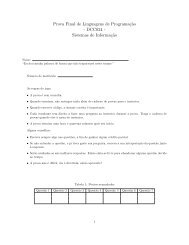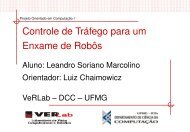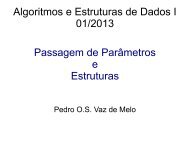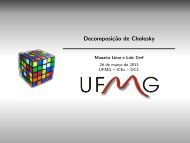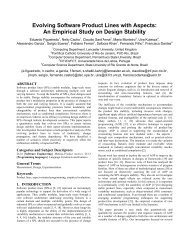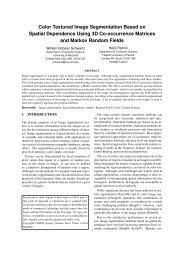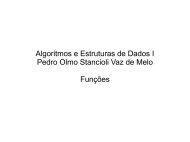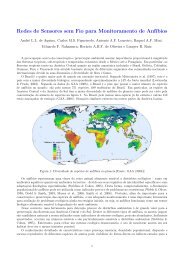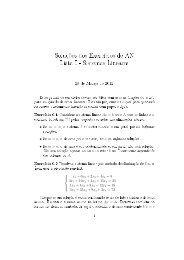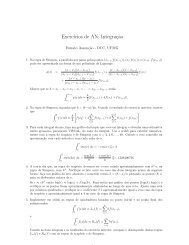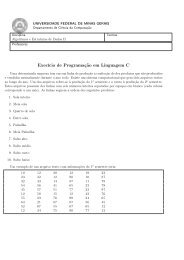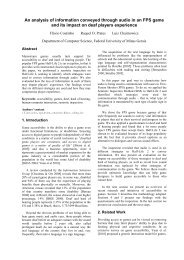A Geographical Analysis of Knowledge Production ... - ResearchGate
A Geographical Analysis of Knowledge Production ... - ResearchGate
A Geographical Analysis of Knowledge Production ... - ResearchGate
You also want an ePaper? Increase the reach of your titles
YUMPU automatically turns print PDFs into web optimized ePapers that Google loves.
7. CONCLUSIONS<br />
In this paper, we used collaboration networks to analyze<br />
the scientific production in Computer Science. We formed<br />
networks for 30 Computer Science graduate programs in<br />
three regions and studied their characteristics, using several<br />
metrics. Furthermore, we defined 30 different subfields and<br />
studied the characteristics <strong>of</strong> their collaboration networks.<br />
A temporal study was also performed, using a period <strong>of</strong> 12<br />
years, from 1994 to 2006. Next, we visually studied the<br />
inter-relationship between different Computer Science subfields.<br />
The Ca-US network has shown a much larger number <strong>of</strong><br />
papers per author and <strong>of</strong> collaborators per author. It also<br />
has the lowest clustering coefficient, indicating diversified<br />
collaboration and a low transitivity. The Fr-Sw-UK network<br />
has a small giant component size when compared to<br />
the other two networks, which could be related to the existence<br />
<strong>of</strong> programs from different countries in this network,<br />
but also could be a characteristic intrinsic to the Fr-Sw-UK<br />
programs, as shown in Table 3. The average path length and<br />
diameter in the Ca-US network is smaller, which demonstrates<br />
it is a denser network, since it is also the largest in<br />
number <strong>of</strong> vertices. Furthermore, the degree distribution<br />
suggests a smaller difference from the authors that publish<br />
more to the authors that publish less.<br />
The temporal evolution has shown a rapid increase in the<br />
scientific production <strong>of</strong> Br programs from 1997 until 2000,<br />
which may be due to Brazilian government agencies’ increased<br />
efforts to assess the production <strong>of</strong> the country’s researchers<br />
in the period. In addition, the Br and Fr-Sw-UK<br />
networks have shown a fast increase in the size <strong>of</strong> their giant<br />
component and in the size <strong>of</strong> their average path length from<br />
1998 onwards, especially in the former. The Br network has<br />
Figure 15: Interrelationship Between Fields<br />
also shown a significant reduction in its clustering coefficient<br />
in the period.<br />
An analysis <strong>of</strong> the evolution <strong>of</strong> two well-established Computer<br />
Science subfields (Computer Architecture and Databases)<br />
and two emerging subfields (Bioinformatics and Geoinformatics)<br />
was also performed. The study has shown a significant<br />
increase in the size <strong>of</strong> the Bioinformatics network in<br />
the period. The two emerging subfields have also had an increase<br />
in the clustering coefficient measure, indicating they<br />
are becoming denser in a fast pace.<br />
Finally, we generated a graph for visualization <strong>of</strong> the interrelationships<br />
between subfields, in which vertices represent<br />
subfields, the vertice size represents the size <strong>of</strong> the<br />
subfield in number <strong>of</strong> authors, and the proximity between<br />
vertices represents the intensity <strong>of</strong> the interrelationship between<br />
these vertices. A visual analysis showed a division<br />
<strong>of</strong> Computer Science into separated sets <strong>of</strong> subfields. For<br />
instance, subfields related to Computer Systems, such as<br />
Computer Networks, Computer Architecture, and Operating<br />
Systems, are displayed in a set, while subfields related<br />
to Databases, such as Web, Hypermedia and Multimedia,<br />
Information Retrieval, Data Mining, and Information Systems,<br />
are displayed in another. However, it should be noticed<br />
that this division does not necessarily imply that these<br />
subfields are related to each other, but only that their researchers<br />
are more likely to work together.<br />
8. ACKNOWLEDGEMENTS<br />
This reserach is partially supported by the Brazilian National<br />
Institute <strong>of</strong> Science and Technology for the Web (grant<br />
MCT/CNPq 573871/2008-6), by the InfoWeb project (grant<br />
MCT /CNPq/CT-INFO 550874/2007-0), and by the authors’<br />
individual grants from CNPq.



